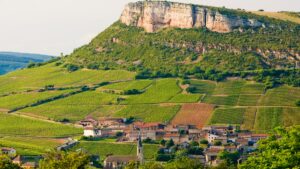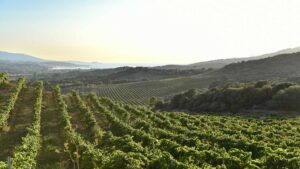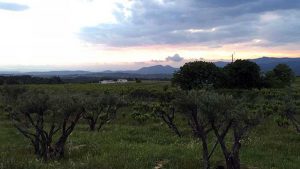
Climate disruption is no longer a mystery and with seasonal cycles disturbed, winemakers are already seeking solutions to adapt to the climate of tomorrow and continue to produce wine with the same typicity.
To cope with the many problems related to climate change (increase rates of diseases such as oidum and mildew, drought and the denaturation of wine), the idea of establishing new grape varieties in certain regions is being explored.
This is particularly the case in Champagne, where, since 2016, wine growers have been studying the possibility of creating four to five new varieties of grapes to anticipate the future needs for new grape varieties once those used today will no longer be sufficiently resistant to the region’s extreme change in climate.
The general rise in temperatures means an increase in sugar that then implies an increase in the level of alcohol present in the wine. In the vineyards of Bordeaux, this risk is more than a reality with grape varieties that already suffer from climate disruption. Indeed, Merlot, the most widespread regional grape variety, is ripening earlier and earlier each year, deteriorating the quality of the wine, as it loses freshness and sees its level in alcohol rise. To adapt to these changes, this June, the general assembly of AOC Bordeaux and Bordeaux Supérieur trade unions adopted the measure authorizing winegrowers to plant and vinify seven new grape varieties in the region. These four red and three white varieties come from Portugal (Alvarinho, Touriga Nacional), are either forgotten grape varieties (Petit Manseng or Castets), or are hybrids (Arinarnoa, Marselan, Liliorila). They will be planted in 2020 and the first vinifications should take place in five to six years.
Bordeaux and Champagne are not the only regions being forced to adapt to these changes, Cognac will also have to take important steps to be able to continue producing as much…while keeping the same quality as today! This represents a significant challenge.
For now, however, not all wine regions are being negatively impacted. The northernmost ones, such as the Loire Valley, have gained one degree in the last 50 years, which improves grape ripening conditions and thus increase the quality of the wine. But, even if conditions seem more favorable, winegrowers must also adapt to an increase in climatic incidents which can seriously damage vines, particularly the periods of heatwaves and frost that have become more common in recent years.



